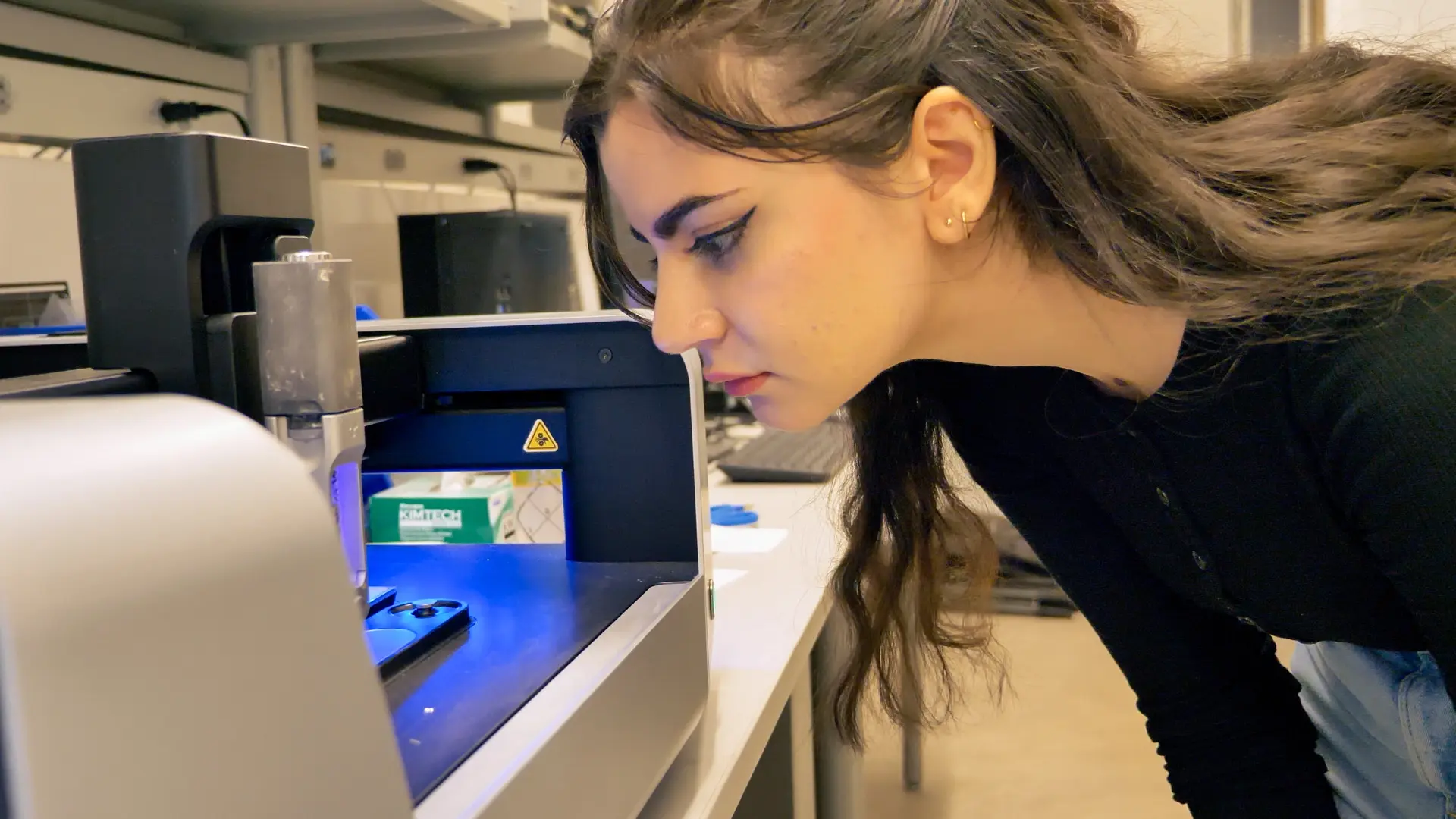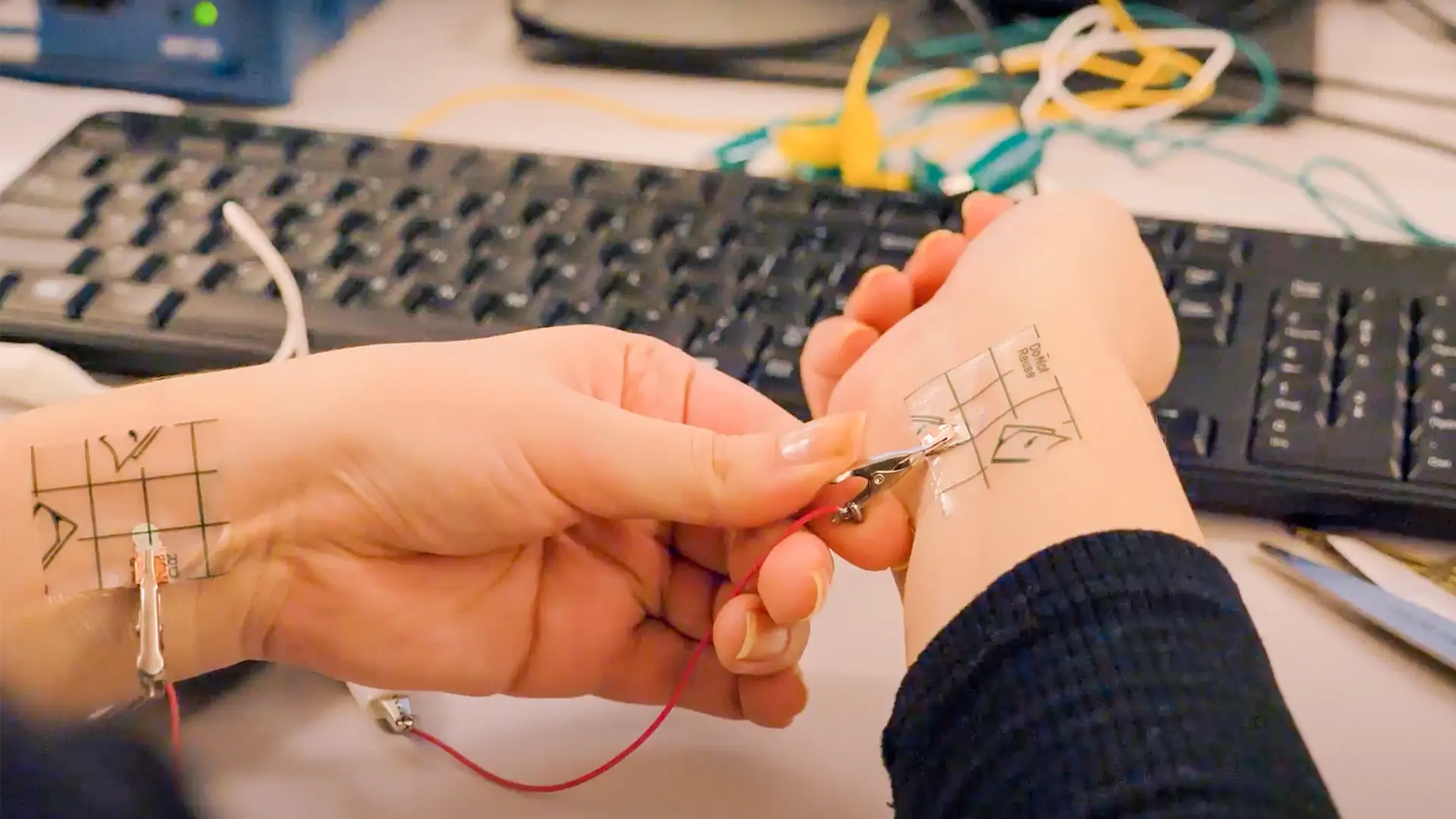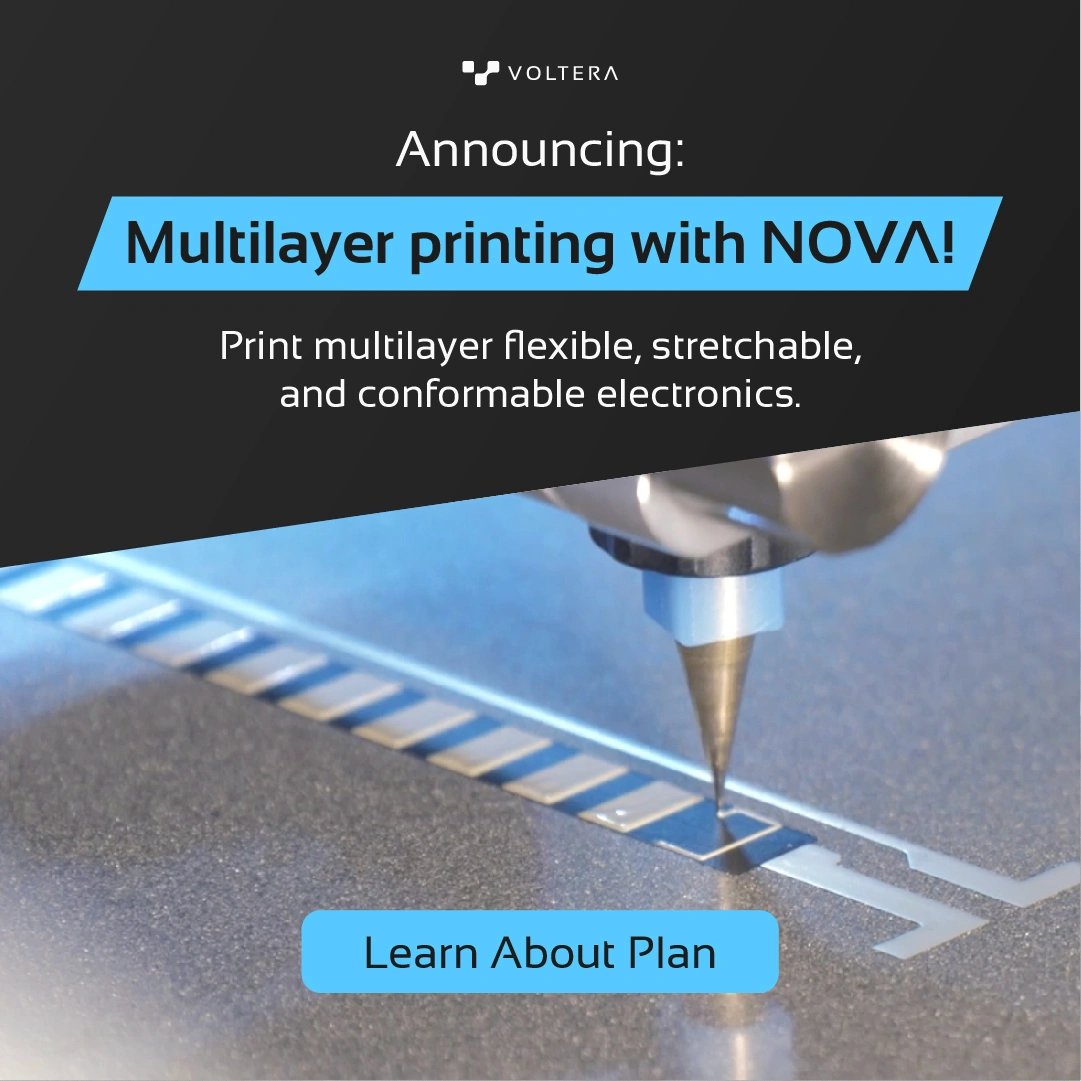Webinar Recap: Printing Multilayer Flexible And Stretchable Circuits
In this webinar, our Technical Sales Lead, Giovanni Obando, walked attendees through the process of printing multilayer circuits using Plan, the latest software feature of Voltera’s NOVA materials dispensing system.
It included a live demonstration showcasing how Plan enables a new multilayer printing workflow, followed by a Q&A session where attendees had the opportunity to gain deeper insights into compatible materials, print settings, and best practices for printing multilayer flexible circuits.
Webinar highlights
Overview of Plan and multilayer printing
Key benefits of Plan include:
- Efficient multilayer workflows: Users can stack up to four layers and visualize print sequences before execution.
- Improved print job editing: Tool paths, probe targets, and traces can be adjusted for higher accuracy.
- Height mapping optimization: Ensures precise ink dispensing on flexible and stretchable substrates.


NOVA probing the existing layer to account for height change
Live demonstration
Giovanni demonstrated the step-by-step process of printing multilayer designs with Plan:
- Loading files: Importing Gerber files for a three-layer flexible circuit
- Editing files: Adjusting dispense start/stop points, reordering layers, and refining print settings
- Height mapping: Using the probe to measure layer height and prevent nozzle collisions
- Executing the print job: Printing a conductive circuit on a flexible polyimide film


Attendees saw first-hand how Plan simplifies multilayer printing and optimizes print quality and repeatability.
Key takeaways from Q&A
During the Q&A, attendees asked insightful questions about multilayer printing, material compatibility, and best practices. Some key takeaways included:
- Flexible and stretchable materials: NOVA supports most screen-printable inks, including stretchable silver and carbon inks, for applications such as wearables, printed antennas, and bioelectronics.
- Substrate compatibility: NOVA can print on soft substrates such as fabric, flexible substrates like polyimide (PI) and polyethylene terephthalate (PET), as well as rigid substrates like FR1 and FR4.
- Ink selection and curing: The choice of ink depends on conductivity, adhesion, and flexibility, with thermal curing required after each layer.
- Alignment and fiducials: We recommend using fiducial markers for precise layer alignment.
- Offline use of Plan: An internet connection is required to enable cloud access. Stay tuned for future updates to this functionality.
Additional resources
Want to explore multilayer projects completed with NOVA? Check out these helpful resources:
- White paper: Printing a Flexible Membrane Keyboard with Conductive Silver Ink and Dielectric Ink on PET
- White paper: Printing Electroluminescent Ink on Paper and PET
- White paper: Printing a Flexible PCB with Silver Ink on PET
Ready to print multilayer flexible circuits? Book a meeting to learn more about NOVA, or check out our printing service.

Check out our Customer Stories
Take a closer look at what our customers are doing in the industry.

